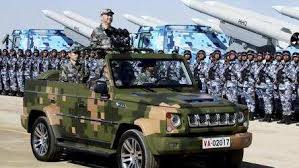China’s aggressive moves in Ladakh and the South China Sea are based on a historical construct. If a Green Line crafted in 1960 by then paramount leader Mao Zedong is the objective of the People’s Liberation Army (PLA) in Ladakh, it is the 9, 10 or 11 dash line (depending on political convenience; the concept has a dubious historical basis in the Sino-French war) that is the target of the Red Army in the South China Sea.
The PLA’s main enemy in the South China Sea is a competing superpower, the US, which is backing Taiwan, even as members of the Association of South-East Asian Nations look the other way. Its adversary in Ladakh, adjoining sensitive and restive Tibet and Xinjiang, is a rising power, India, whose neighbors have all become increasingly cosy with Beijing in recent years .
Although the ambitious western theatre commander of PLA, Zhao Zongqi, portrayed the Indian Army as an aggressor or a war monger after Monday’s clash at the Rezang La- Rechin La ridge line, the fact is that Indian troops are only preventing the Chinese from reach their outrageous Green Line claim in the south of Pangong Tso.





